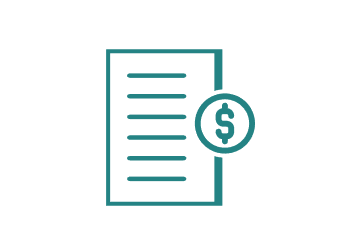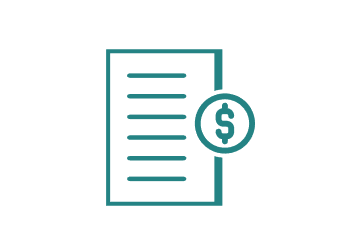Many business professionals approach calculating tax liability with apprehension or confusion, especially due to potential complexities across income tax, self-employment tax or capital gains tax. Learn the basics of calculating your tax liability, including ways to reduce your company’s total tax burden and where to find the right resources to help.
Understanding Tax Liability for Businesses
Tax liability refers to the total amount of taxes that businesses owe to the IRS, including income tax and self-employment tax. What does this entail?
- You have a tax liability when money is earned or an item is sold for more than it was purchased.
- A person or company’s tax liability is the total amount of taxes they owe to the government in a year. It includes income, sales, property taxes and more.
- The net tax liability is what you owe the taxing authority after factoring in deductions, credits, exemptions and any prepayments made during the year.
- A tax liability is not the same as a refund. A refund means there were overpaid taxes that are due to be refunded to you. An underpayment results in money owed at year end.
Navigating the complexity of your company’s tax obligations can be a challenge for small business owners and entrepreneurs—particularly those just starting out. There is income tax liability on profits, capital gains tax when assets are sold at a profit, as well as payroll taxes if there are employees.
For instance, if there was quite the profitable year with your startup, that’s great news. But do not forget that this means a higher taxable income, which could push your business into a steeper federal income tax bracket.
And there’s more—deferred taxes may also come into play. They are another potential liability that is due to differences between accounting rules and IRS regulations.
In short, managing all these factors affecting your overall tax bill can be complex, but is absolutely necessary to maintaining compliance and avoiding penalties later on.
Calculating and Managing Business Tax Liability
Tax liability—the sum of taxes a business owes to the IRS. Put simply, calculating tax liability works as follows:
- Calculate gross income: Sum up all revenue from sales, interest, dividends etc.
- Calculate deductions: Total all tax-deductible business expenses like employee salaries, supplies, operating costs, depreciation etc.
- Calculate taxable income: Gross income minus deductions equals taxable income.
Then, apply the current federal and state tax rates to the taxable income, factoring in credits, self-employment taxes or any estimated quarterly tax payments already made for the year.
Estimating and making quarterly tax payments is the law that is enforced by the IRS and will usually include fines and penalties if they are filed or paid late.
Online calculators can help in understanding taxable income and estimating those all-important quarterly payments—key factors when calculating income tax liability for businesses.
Reducing Business Tax Liability through Deductions and Credits
Paying less tax sounds like wishful thinking but it is possible to trim down your business tax liability by making the most of deductions and credits.
Deductions are reductions on your taxable income. Think of them as coupons used at the grocery store—but for taxes. They reduce the amount of salary or business income that is taxable—which in turn reduces what is owed.
Fortunately, there are several available: equipment expenses, office rent, advertising costs—these are all potential deductions. A good tax software can help identify these savings opportunities.
Understanding Deferred Tax Liability
A slightly more complex area is deferred tax liability. This arises when there’s a difference between what you report on your financial statements and what the IRS sees on your return because of differences in accounting rules.
Deferred does not mean denied. It means delayed until later years. While this could increase future liabilities, smart planning now can lead to overall reduced payments.
Using these strategies helps businesses significantly reduce their total tax burden.
The Impact of Capital Gains on Business Tax Liability
When assets are sold for more than their purchase price, the result is a capital gain. This extra income is not just good news—it also adds to your company’s tax liability.
There are long-term versus short-term gains, as well. It matters how long you held an asset before selling it. If you owned it for over a year, any profit becomes a long-term capital gain, which is typically taxed at lower rates compared to short-term gains, or assets sold within one year.
To help navigate this complex terrain, consider using resources like the SmartAsset Income Tax Calculator. Tools such as this can be beneficial in not only providing insight into potential taxes, but also in offering techniques to decrease overall taxation.
In essence, managing capital gains wisely plays a crucial role in controlling your total tax liability and ultimately keeping more money in the business coffers.
Seeking Professional Assistance for Business Taxes
Tackling business taxes can be a challenging task, but with professional help, it’s easier to navigate this complex landscape.
Fractional financial advisors, enrolled agents and CPAs specialize in creating personalized strategies that can reduce your overall business taxes. These professionals are up-to-date on all things related to income tax liability and capital gains tax liability—two significant factors affecting a company’s financial health.
Beyond just number-crunching, these experts also offer strategic advice tailored to specific needs. This might include identifying potential deductions or helping you understand how long-term vs short-term capital gains could impact your total tax bill.
Minimize Your Tax Burden
Getting tax help for your business is not just an end of the year activity—the sooner it’s accessed, the better your outcome will be. From timing when to make business purchases to systematizing and automating your tax payments, each has the potential to reduce your tax liability and decrease your stress. Contact us for a free consultation to be matched with an accounting or tax professional that can lead you through the labyrinth of managing your tax responsibilities.









